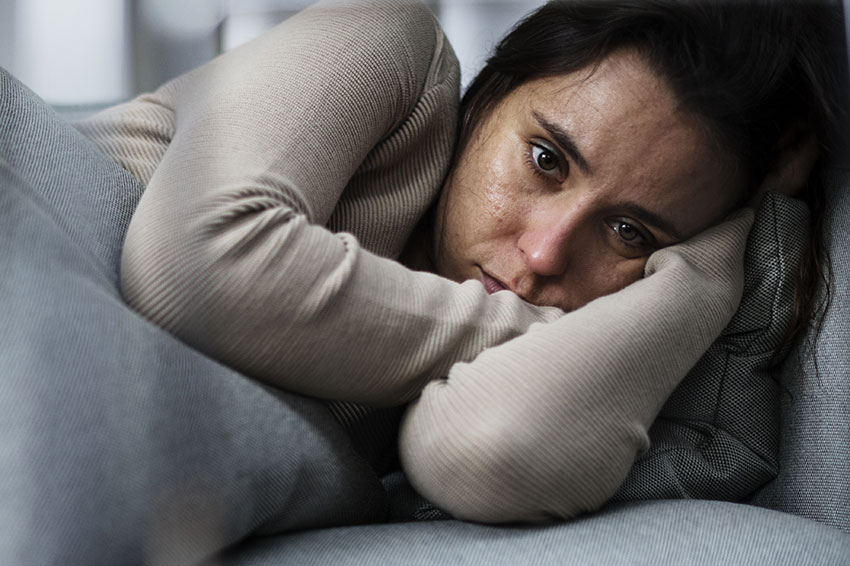
Living With Lyme Disease
The Lyme Epidemic
Until recently, the Centers for Disease Control and Prevention (CDC) stated that approximately 30,000 cases of Lyme disease were reported each year. However, in September 2015, the CDC revised their estimates, indicating that more than 329,000 new cases were contracted annually in the US — an increase of up to 10 times what was previously believed. Populations of the ticks that transmit the disease continue to grow and spread, and the number of victims increases.
Lyme is now considered an epidemic in more than 15 states. Healthcare practitioners report increased virulence in the disease, and some speculate that symptoms are amplified by diverse factors such as environmental mold, electromagnetic fields produced by wireless systems and the microwave radiation from mobile phones, general immune deficiencies caused by chronic problems such as poor dental health, and the nutrients missing in our diet. Some doctors also believe that Lyme provides a hospitable environment for opportunistic bacteria that invade the body and choose the weakest areas to survive for as long as possible. And patients may still suffer from symptoms even following lyme disease treatment — a phenomenon the CDC calls PTLDS (Post-Treatment Lyme Disease Syndrome). Symptoms can include diffuse pain, difficulty concentrating, shallow breathing, incapacitating fatigue, seizures and brief bouts of paralysis. Intense inflammation and difficulty controlling it can cause an autoimmune reaction, as with Lyme arthritis.
Lyme disease remains a mysterious, confounding and elusive illness, difficult to diagnose and presenting a range of debilitating symptoms. More funding is needed for the extensive research necessary to develop improved diagnostic testing and comprehensive treatment options. Patients’ testimonials also affirm that the road to recovery can be long and difficult, even after the initial infection is resolved. Despite these challenges, there is no reason to lose hope. If you’re facing the struggle of living with Lyme, you are not alone. Treatment protocols are being refined by expert professionals who work tirelessly to provide patients with the help they need. There is also a worldwide Lyme community, online and off, that can provide support and understanding. The battle can be won with the right team around you, which must involve skilled medical practitioners who are familiar with Lyme and its challenges.
GET OUR LYME & TICK-BORNE DISEASE PROGRAM GUIDE
Living with Lyme Disease
Lyme disease is a bacterial infection caused by the bite of the black-legged tick. Borrelia burgdorferi, the most common Lyme bacteria, is an organism with a remarkable ability to mask its presence, so that it won’t be attacked by the immune system. When presented with an immune response, it repeatedly changes its expression and genetic appearance to thwart the attack, so the immune system can’t keep up. In addition, each tick carries an array of microorganisms including viruses, parasites and sometimes fungi.
Each tick bite is as unique as a fingerprint. This may account for the array of different symptoms reported by patients, which can include:
- Joint pain
- “Brain fog”
- Fatigue Muscle pain
- Dizziness
- Flu-like symptoms
- Paralysis and other neurological damage, especially following longterm exposure to Lyme
Since these symptoms can be caused by any number of other ailments, it may be very difficult for traditionally-trained doctors to identify tick-borne disease and its different manifestations. And Lyme may qualify as an “invisible disease”, making it challenging for a patient who “seems well” to educate friends, family and coworkers about his or her condition. Between coping with symptoms, the quest to obtain appropriate treatment from medical professionals, and lack of understanding from the people around us, living with Lyme can seem like a full-time job, and not an easy one. Fortunately, it is possible to live with Lyme and overcome it. Proper support for one’s overall health and wellbeing are essential to winning the Lyme battle.
Battling Lyme Disease
The first challenge is to find a Lyme Literate Medical Doctor (LLMD). Patients often go to great lengths to navigate treatment options and connect with practitioners who understand their needs. They must learn to manage naturopaths, nutritionists, physical therapists, mental health counselors, and a wide range of other specialists in the quest for relief from the symptoms and consequences of Lyme. They may even travel abroad, since the most compelling research regarding the treatment of Lyme has been conducted overseas. However, the popularity of innovative scholarship and treatments, such as the Klinghardt and Jemsek protocols, means that comprehensive therapy plans are becoming available closer to home.
Which treatment to choose? The default recommendation of an antibiotic regimen may not have the desired effect. Depending on type, stage and exposure to Lyme disease, the results of antibiotic treatments vary, may only provide benefits in the short term, and sometimes cause more harm than good. The complexity of the disease requires a comprehensive treatment approach that addresses and supports the body’s own resources, in addition to attacking the infection itself.
Ensuring overall wellness is vital to the fight against Lyme. Any medical treatment, no matter how high-tech and cutting-edge, will not have the desired effect unless the patient is otherwise in the best possible health. Proper nutrition is necessary to support healthy gut flora, and provide cells with nutrients and basic building blocks so they can function correctly. Supplements may be required to address deficiencies. Professional guidance is strongly recommended when implementing any dietary change or supplemental regimen.
Alternative treatments include supplement protocols, detox regimens, oxygen therapies and natural anti-microbial treatments. Stem cell therapies, an exciting and innovative option for repairing and replacing damaged tissues, have become more widely accessible. Mental health support is vital, to combat the stress and anxiety that may arise from being a warrior for one’s own wellbeing. And a foundational approach to treatment – one that emphasizes changing the environment within the body, to make optimal health more achievable – has been shown to be very effective in combating not only active Lyme infection, but also its lingering aftermath.
Bottom line: The human immune system and its ability to heal are among nature’s most sophisticated and complex designs, and any outside interventions should always support and not disrupt that healing process. There’s no “one size fits all” – everyone’s case is different. Therefore, once you have found your trusted practitioner, have him or her provide you with a personalized road map of treatments and supplements, ideally employing the best methods of both traditional and alternative medicine, while remaining as non-toxic as possible and as non-invasive as possible.
Does Lyme Disease Stay with you for Life?
Yes and no. The answer to this question depends on the duration of the infection prior to treatment, and on the vast array of complex activity within a body affected by Lyme. But it also depends on you. Being vigilant and taking care of yourself conscientiously goes a long way towards living symptom-free for long periods of time, if not for the rest of your life.
Many Lyme patients reported that the healing phase from tick-borne disease took them up to 12 months or more. Patients who opt for cellular therapies and foundational medicine methods have found that the reward of a sustainable result and a therapy approach that syncs with the body’s own healing process comes with the downside of slow recovery. During the recovery phase it is recommended that patients manage symptoms with home remedies and a natural supplement regimen, to control histamine reaction, inflammation, sleeping disorders, pain ‘flare ups’ and so forth. Again, it is also very important to care for oneself in a broader sense, with special attention to proper nutrition, mental health care, a sustainable exercise program, and community support. Lyme is a debilitating disease, but it need not be a life sentence.
Can you Live a Normal Life with Lyme Disease?
What do patients say?
Fontaine, a “Lyme warrior”, says the following: “Yes, for the most part. But Lyme is a chronic, degenerative condition — a multisystem inflammatory attack that must be intermittently battled on myriad fronts. There will be times of normality and times of distress. Peaks and valleys. It’s critically important, then, that you guard your well-being and take good care of your body. Prioritize this and don’t feel self-indulgent.”
Another Lyme patient said: “Think of food as medicine. Become better-informed in this regard, and always be mindful of what you eat. Poor diet, stress and a sedentary lifestyle can wreak havoc. And being attentive to mental health is every bit as important. Be kind to yourself and try to cultivate patience. Attitude and emotions color everything.”
Andrea, who has been battling Lyme for over a decade, says: “Chronic illness can be highly inconsistent symptoms-wise. Symptoms also vary from patient to patient and therefore can be additionally stressful. Recognizing this will help you move through difficult episodes and forward on your path to healing. I have started writing a blog to track and share my experience. That way I can inform, comfort, and help other ‘Lymies’ in the online community. I also know of many that keep a private journal, which may be therapeutic in your case. I think, above all, its important not to isolate yourself.”
These patient experiences show the drastic impact Lyme can have on one’s life. Living with Lyme affects the way you live your life, your sleeping and eating habits, and sensitivity to your body’s symptoms. It can also affect you emotionally, and require a strong mental makeup to continue coping with the rollercoaster of symptoms. Despite these obstacles, there is no reason to lose hope. The battle against Lyme can eventually be won, with care, courage and the right support group around you, which must involve skilled medical practitioners who are familiar with Lyme and its many challenges.
Infusio is a unique, multi-level approach to healing, designed by British naturopath Philip Battiade for the treatment of chronic degenerative illnesses such as Lyme Disease, autoimmune disorders, neurological disorders and cancer. The framework of the Infusio Concept consists of the Five Steps To Health, a foundational system that helps determine each patient’s individual needs and then optimizes their health. Integrating the best of traditional European medicine, alternative medicine and cutting-edge science, offering services ranging from Bioenergetics to Stem Cell Therapy and rejuvenating spa treatments, Infusio provides a 360° individualized approach to health.
Originally posted 2018-05-04 13:43:34.


